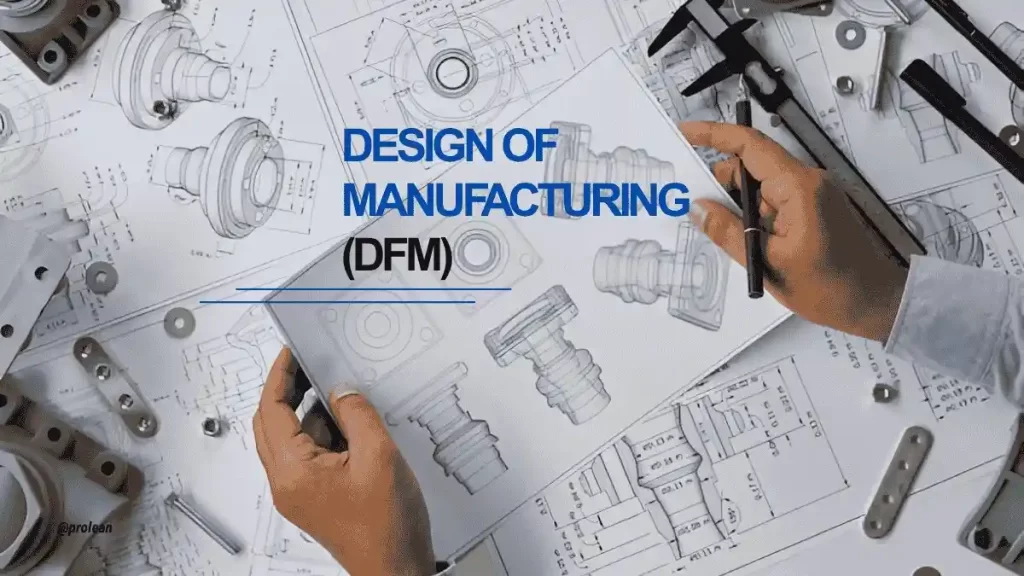
Design for Manufacturability
Success or failure often depends on decisions made long before a product reaches production. Early design choices are crucial in determining how smoothly manufacturing will go.
Design for Manufacturing, or DFM Design, is a process that puts manufacturing needs front and center during the product design phase. Instead of designing first and figuring out production later, DFM helps eliminate potential issues early in the design phase.
This approach aims to create functional, efficient, and cost-effective products at scale with strict quality control. Many companies integrate design for machining with structured methods like 6-Sigma to improve quality, reduce errors, and streamline production. This article discusses design considerations for machining.
What is Design for Manufacturability?

Design for Manufacturing (DFM)
Design for Manufacturing (DFM) helps you optimise quality and save cost. It makes your production faster and more reliable.
DFM means:
- Designing products with manufacturing in mind from the start. You can say design guidelines for machining.
- You begin at the concept phase and continue through detailed engineering.
- By applying DFM, you can reduce costs and avoid unexpected production delays.
- This approach allows for easier production and meets high standards.
3 Core Goals of DFM
Design for CNC machining aims to streamline operations, minimise expenses, and improve quality during the production process.
Streamline and Simplify the Manufacturing Process
Keep your design simple. Streamlined production implies reduced processes, fewer possibilities to make mistakes, and shorter production lines. This efficient strategy minimises time and frequent stops on the production floor.
Reduce Manufacturing and Assembly Costs
It is also significant to keep costs lower. Operational costs and delivery time can be reduced through efficient assembly techniques.
Maintain or Improve Product Quality
Quality of parts will satisfy customers and minimise returns. DFM ensures that the designs align with manufacturing standards like ISO 2768, guaranteeing minimal defects. This results in a consistent performance and develops a name for your brand.
Key DFM Principles
DFM is based on simple rules. It allows you to make the CNC part design simpler and relatively cheaper. Here are its key principles;
Keep Designs Simple
It is necessary to keep the design as simple as you can. You must design to fulfil all the functions using the minimum number of parts. The fewer the components, the faster the assembly, the cheaper, and the less room to make mistakes. Moreover, a simple design makes production easy and saves your time.
Focus on Easy Assembly
Make assembly instructions simple and without manual adjustments. When the parts fit and bond together without any hassle, your assembly process becomes faster, reducing the chances of making mistakes.
Use Standard Components
Where possible, use standard parts, materials, and processes. Standardization avoids the need for special orders. Besides, it shortens lead times and cuts costs. It also simplifies the sourcing and inventory management.
Choose the Right Materials
Choosing affordable and the right materials can fit into your manufacturing procedures. It positively affects strength, durability, and surface finish. Consider the availability and proper fit of the material to your process.
Set Practical Tolerances
Excessive and tight tolerance make production more challenging and costly. So, establish tolerances that give optimal fits without causing an unnecessary increase in costs.
Design for Real-World Use
Consider the intended real-world operating conditions, and see how it performs. Performance is influenced by temperature, humidity, vibration, and wear. Ensure that all the parts are appropriate to the environment to prevent future failures.
Review and Improve Regularly
At each stage, schedule a review with your team. Evaluate possible manufacturing problems, cost effects, and quality risks. Use this feedback to improve your design and avoid issues on the production floor.
Prototype and Validate
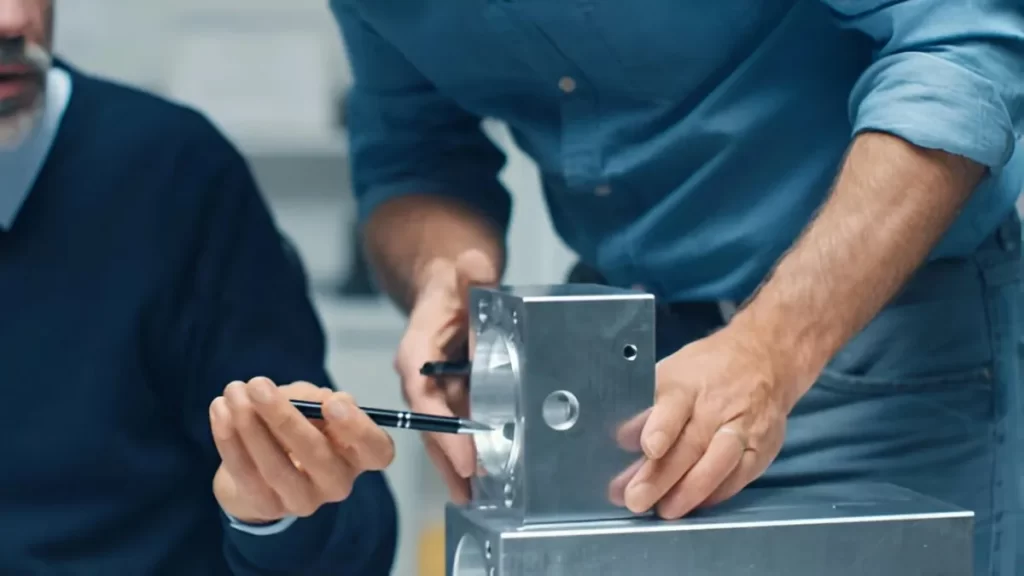
Evaluating Prototype
Create prototypes earlier to see how they work and how long they last. Prototyping assists you in identifying the flaws in time before the actual production and helps validate that your product meets industry requirements before full-scale production.
Select the Best Manufacturing Process
Select an economical process based on product volume and design. Automation can increase efficiency, minimise labour, and improve consistency.
Try Prolean Now!
Practical Benefits of Applying Design for Manufacturing
Applying Design for Manufacturing (DFM) in CNC machining projects has practical benefits extending to the product lifecycle. It establishes an excellent base to produce parts economically while still maintaining quality.
Cost Projections Early On
DFM allows teams to estimate the manufacturing cost during the design phase. This planning prevents budget overruns and keeps the project financially sound.
Identify and Resolve Production Challenges Ahead
Considering manufacturing into design allows for detecting and correcting any problems that may arise during manufacturing before it starts. This upfront strategy minimises the delay days, at least, and avoids expensive revisions.
Create Designs That Adapt Easily to Change
Demands in the market and product requirements tend to change. DFM encourages adaptable designs that can evolve with market and technical changes.. The designs can be subjected to changes without significant redesigning and incurring huge costs to make your product viable.
Remove Unnecessary Complexity
Remove unnecessary design features to minimise the cost of materials and labour. You can also achieve reduced assembly time and easy manufacturing.
Strengthen Supplier Relationships
Manufacturable clear designs enable suppliers to know more about what you want, leading to more accurate bids, faster delivery, and quality control during production.
Who Takes Part in the Design for Manufacturing Process?
The Design for Manufacturing (DFM) is based on teamwork. Various professionals are involved in manufacturing quality products at a fair price.
Design Engineers
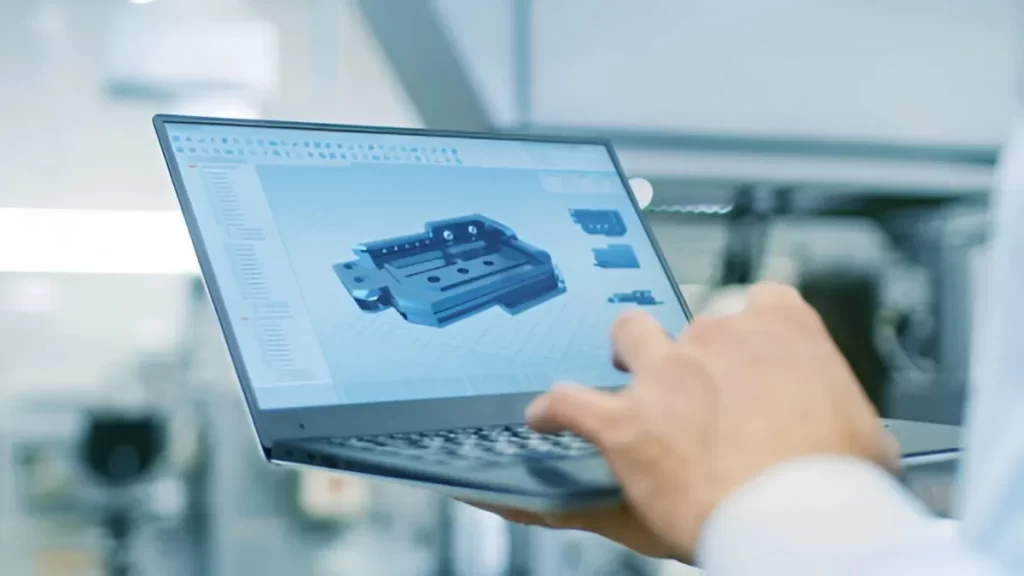
3D Model Designing
The design engineers formulate the product blueprint. They concentrate on designing things for easy part manufacture with simple components and think of materials, assembly, and acceptable tolerances at the beginning.
Manufacturing Engineers
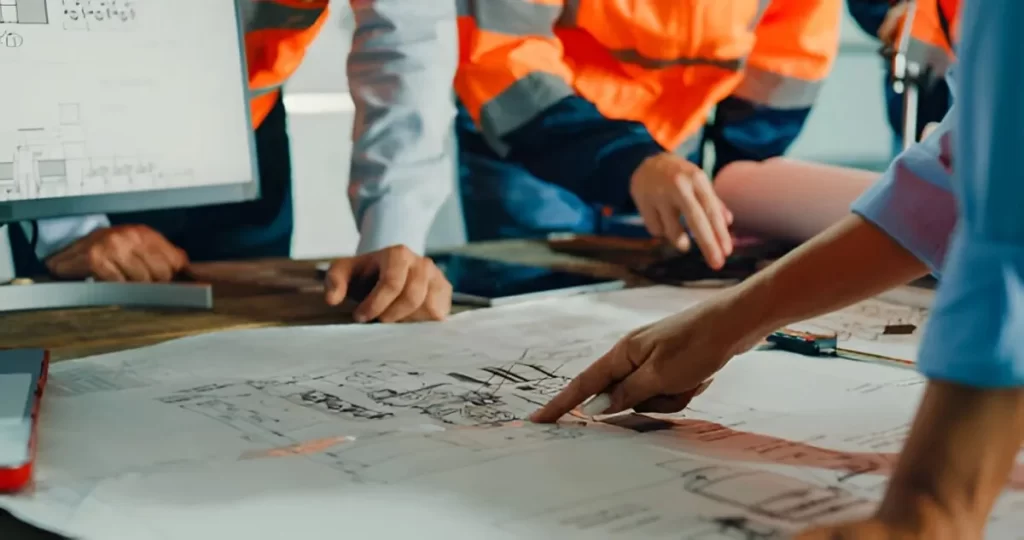
Design Evaluation by Manufacturing Engineers
Manufacturing engineers evaluate the design, and they advise on the most appropriate methods of producing the design. They choose machines, tools, and processes to create consistent quality items.
Product Managers
The product managers lead the overall teams. They reconcile the customers’ expectations, the company’s objectives, and production realities to ensure the project is on course.
Quality Teams (QA and QC)
Quality assurance and control departments establish standards and check products. So, all parts can meet the standards. They identify problems early to prevent faults.
Procurement and Supply Chain Teams
These teams deal with the supply of materials and components. They ensure that the suppliers can deliver on time, at a reasonable cost, and with the same quality, which is imperative in ensuring smooth production.
Cost Estimators
Cost estimators examine design and production plans to predict the costs. They also provide suggestions on how to save money without affecting the quality or time.
Tooling Specialists
Tooling specialists determine or design the tools, fixtures, and molds required to manufacture. Their effort prevents time wastage or inaccuracies in manufacturing and helps the machines work effectively.
Cross-Functional Teams
DFM usually necessitates teams composed of the various departments that are very close to each other. This collaboration enhances communication and problem-solving during the designing and manufacturing process.
External Suppliers and Manufacturers
External partners are usually involved in the DFM when outsourced parts or processes are involved.
Testing and Inspection Teams
Testing teams develop processes to determine whether the product is functioning as needed. They ensure that the product is fit in terms of safety and performance, before it is delivered to the customers.
Compliance Experts
Regulatory experts ensure that the legal and industry regulations are followed in the design and manufacturing to avoid expensive fines or redesign in the future.
Continuous Improvement Teams
These teams aim to seek means of streamlining manufacturing processes as time goes by. They study the production data to implement and find ways to improve it.
Try Prolean Now!
Design for Manufacturing in Different Industries: Practical DFM Examples
Design for Manufacturing (DFM) is a customised approach. As mentioned before, it allows you to enhance production through sound design decisions at an early stage. Here are examples from different industries where DFM principles are widely applied.
Medical Devices
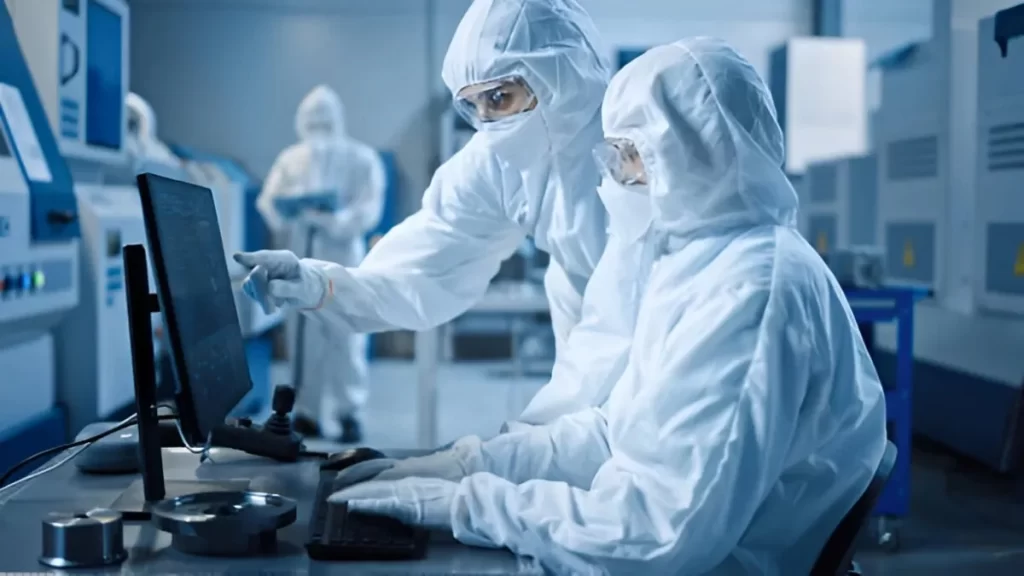 Medical Design Discussion
Medical Design Discussion
The designs are centred on uniform, easy-to-clean forms to achieve high hygiene requirements. The components are simplified to assemble and are ensured to last long and survive in hospitals. Ergonomics is essential; so, these are designed to be handled easily by doctors and nurses during procedures.
Automobile and Mobility
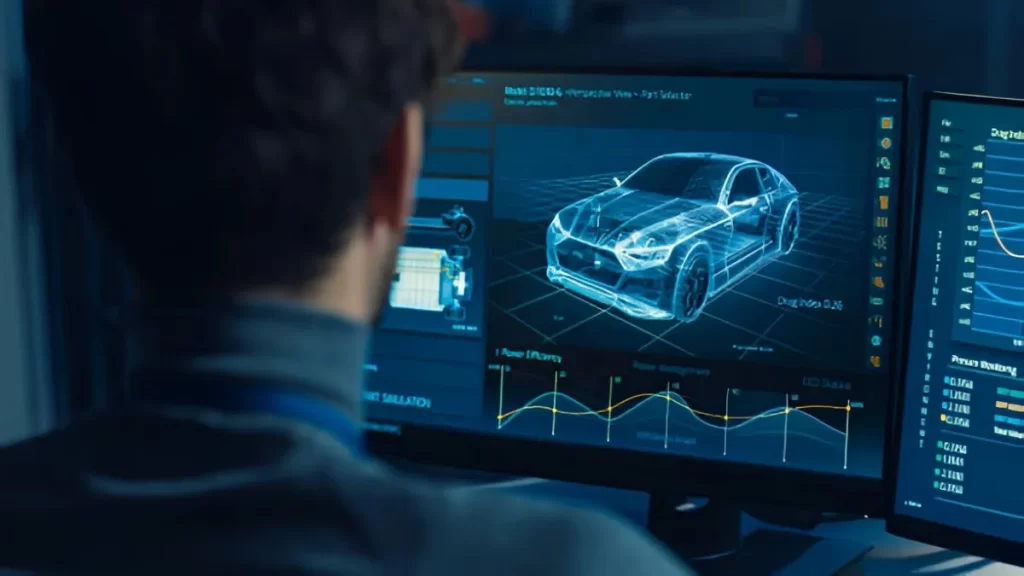
Design for Manufacturing (DFM) for Automobile
Components like the engine covers or the brackets are made to be easily accessed and replaced to shorten the maintenance time. The standard screws and fasteners reduce the complexity of assemblies and decrease the costs.
Consumer Products
Undercuts are minimised to avoid complexity, making plastic parts cheap and easy to fabricate. Screws are substituted by a simple snap-fit joint, which improves the assembly and minimises labour costs.
Furniture Manufacturing
Furniture is designed as modular units, shipped in a flat pack, and customers can easily assemble them. Designs do not involve complex connections; simple connectors increase manufacturing speed and reduce errors.
Aerospace

Aerospace DFM
The dimensions of parts need to be accurate to achieve high safety standards. Lightweight materials such as lightweight titanium or composites make vehicles lighter and stronger, which increases fuel efficiency. The design is a combination of durability and manufacturability.
Electronics
Circuit boards employ surface mount technology to accelerate the automated assembly and minimize errors. A clear thermal design will avoid overheating and lead to better reliability.
What Affects DFM Time?
DFM design may take time to complete proper planning and the required work to maintain the schedule and design implementation. Here are the factors contributing to the longer duration of the DFM process.
Product Complexity
The more complicated the design, the longer the DFM process will take. Intricate shapes, bulk parts, and close tolerances need rigorous analysis and potential design alteration to be manufacturable and cost-effective.
Experience and Team Expertise
An experienced group of people who know design and production processes can easily identify any possible complications in production and propose a reasonable solution. They also prevent the trial-and-error process, which would delay the process.
Utilisation of Advanced Tools and Software
Common manufacturing pitfalls can be checked using modern CAD and DFM software tools that implement automation. These tools help you accelerate review because of the early feedback and decrease manual errors.
Effective Cross-Department Communication
Effective and regular communication among design engineers, manufacturing teams, procurement, and quality control will keep all of them on the same line. Tools to collaborate and periodic meetings must be taken since miscommunication may lead to delays and rework, which is costly.
Prototype Development and Testing
Constructing and testing prototypes are essential to prove the design is feasible. Although it increases the project time, it serves to identify some of the problems that might lead to headaches when the production is done on a large scale.
Regulatory and Compliance Requirements
Regulatory requirements and certifications of products require further testing and records. Eventually, these delay the process. Compliance should be taken into account early. It will likely facilitate the smoothness of these steps.
Material and Supplier Availability
The availability of the materials or components supplied by the suppliers may influence the time of starting the production. The material sourced from known suppliers will avoid unexpected outcomes and save time.
Project and Budget Deadline
The need to exercise more austere budgets and time schedules could require addressing the most critical manufacturing risks at the cost of a comprehensive DFM review. While this may speed up development, it increases the risk of design flaws or costly rework during production.
Build Your DFM Process with Prolean Tech
At Prolean Tech, we understand that quality products start with innovative design. We work closely with you to make sure your product is designed in a way that’s easy and cost-effective to manufacture.
Focusing on manufacturability early on, we help you save time and cost while keeping quality standards. Whether you’re developing something new or need to improve an existing design, we ensure production runs smoothly from start to end.
Our team is flexible and ready to support you. Prolean Tech offers practical advice and real-time solutions that help reduce risks and increase your bottom line, from providing expert engineers to guiding your project management line.
Contact us for custom CNC machining service. We’re here to help you build products that not only meet your goals but are also efficient in producing at scale.

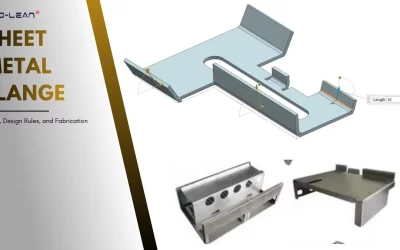
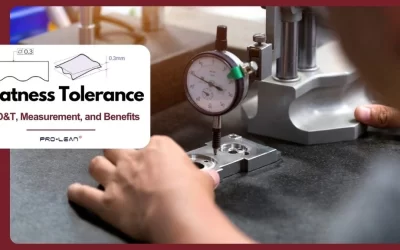
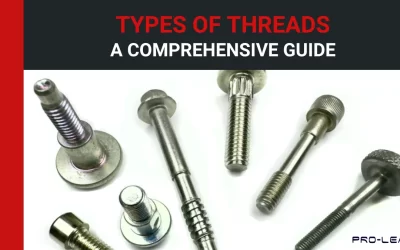
0 Comments